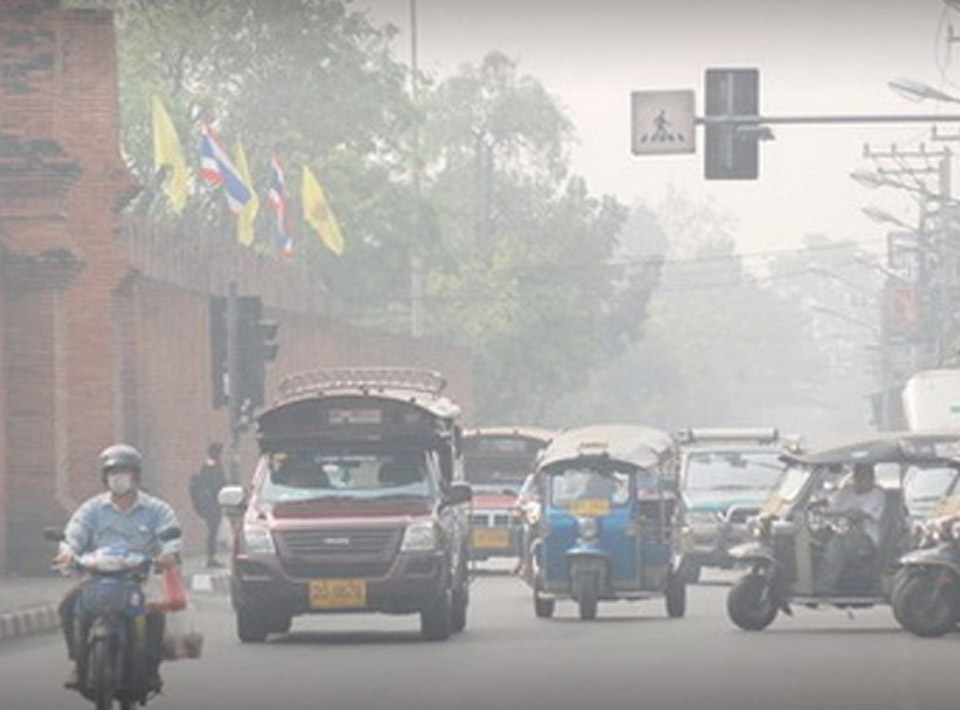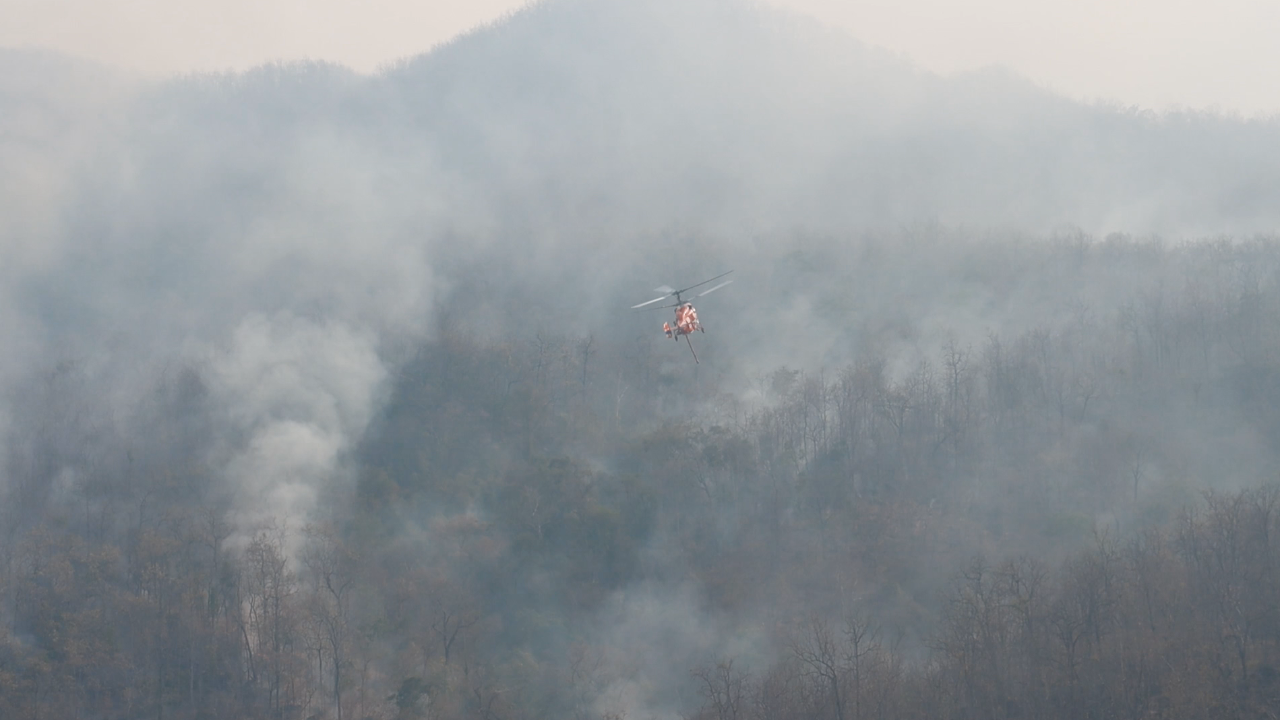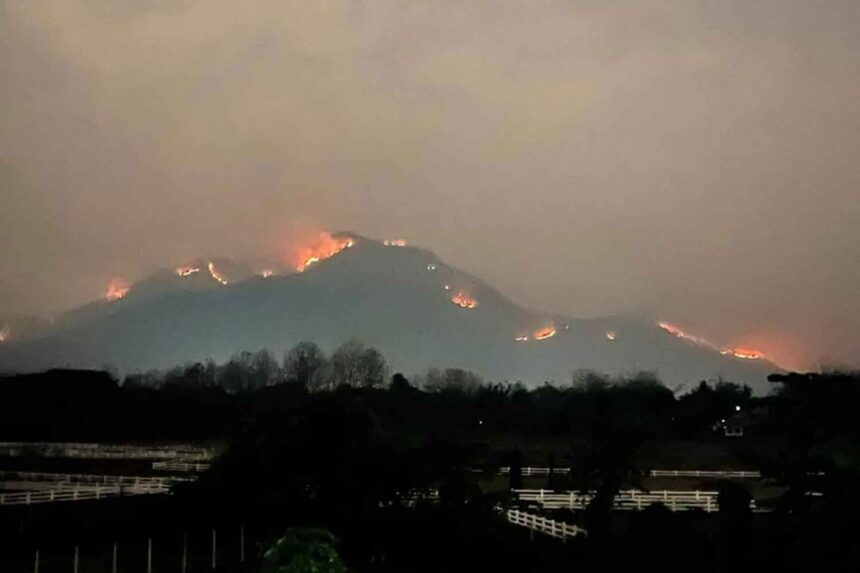Chiang Mai remains ranked among the world’s most polluted cities as wildfires burn unabated with authorities pinning their hopes on an expected rain storm to ease the situation between March 29 and April 1st.
According to Chiang Mai officials the wildfire issues continue to escalate, with over 300 heat points detected by satellite monitoring. Persistent thick smog blankets the city, pushing air pollution to dangerous levels that are impacting health.
Reports indicate that the air quality crisis caused by wildfires and pollution has shown little improvement. Heavy smog has been covering the city since mid-March and is expected to persist until at least the end of the month.
The primary cause is forest burning within the province, with additional contributions from neighbouring provinces and nearby countries.
Satellite data from March 26 revealed 313 heat points in Chiang Mai province out of 2,465 detected across 17 northern provinces. Chiang Mai ranked fourth among northern provinces for wildfire activity, following Tak (406 heat points), Mae Hong Son (387 heat points), and Lampang (378 heat points).
Air quality measurements by the Pollution Control Department showed pollution levels exceeding safety standards at all monitoring stations, ranging from “health impact” to “severe health impact” levels.

Air quality monitoring stations in several areas, including Chang Phueak, Si Phum, Suthep, Mae Chaem, Chiang Dao, and Hot district, recorded 24-hour average PM2.5 levels at 57.8, 39.2, 50.6, 45.5, 64.4, and 96.5 micrograms per cubic metre, respectively.
These numbers are significantly above the safe standard of 37.5 micrograms per cubic metre. The corresponding AQI (Air Quality Index) values were 154, 105, 135, 122, 172, and 222, with the safe threshold being 100.
Global air quality tracking site IQAir.com reported that as of noon on March 27, Chiang Mai’s AQI was 161, with PM2.5 levels measured at 70 micrograms per cubic metre. This places the city in an unhealthy range for all residents and ranks it eighth among the world’s most polluted cities. Cairo (Egypt) topped the list with an AQI of 211, followed by Baghdad (Iraq) at 193 and Chengdu (China) at 190.

As March ends, northern Thailand, including Chiang Mai, is expected to experience summer storms, which may help alleviate the smog. The Northern Meteorological Centre issued a warning on March 27 about these storms, predicted to occur between March 29 and April 1.
A high-pressure system from China and the incoming moisture from southeast winds are likely to create weather conditions for thunderstorms, strong winds, hail, and occasional lightning.
Residents are advised to exercise caution during the storms, avoiding outdoor areas with heavy rain and strong winds. Large trees, weak structures, and billboards should also be avoided. Farmers are encouraged to protect crops and livestock from potential damage.
Affected provinces include Phichit, Phitsanulok, and Phetchabun on March 29, with Tak, Phrae, Nan, Uttaradit, Sukhothai, Kamphaeng Phet, Phichit, Phitsanulok, and Phetchabun expected to follow on March 30. Chiang Mai, Lamphun, Lampang, Tak, and Kamphaeng Phet are forecasted to experience storms from March 31 to April 1.
Related News:
Children in Chiang Mai Suffering from Nose Bleeds as Air Pollution Remains Critical

Geoff Thomas is an award winning journalist known for his sharp insights and no-nonsense reporting style. Over the years he has worked for Reuters and the Canadian Press covering everything from political scandals to human interest stories. He brings a clear and direct approach to his work.














